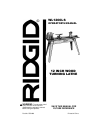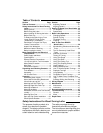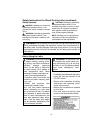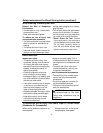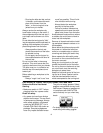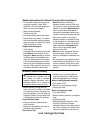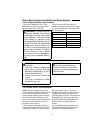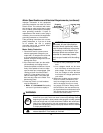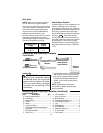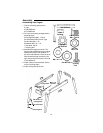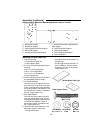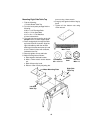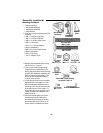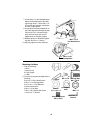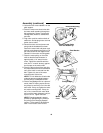
2
Table of Contents
Section Page
Table of Contents ................................2
Safety Instructions For Wood Turning
Lathe .................................................2
Safety Symbols ...................................3
Before Using the Lathe .......................3
When Installing Or Moving the Lathe .4
Before Each Use ................................4
To Reduce the Risk of Injury From
Jams, Slips Or Thrown Pieces
(Kickbacks Or Throwbacks) ..............4
Plan Ahead To Protect Your Eyes,
Hands, Face and Ears .......................5
Inspect Your Workpiece .....................6
Whenever Lathe Is Running ...............6
Before Leaving the Lathe ...................6
Motor Specifications and Electrical
Requirements ..................................7
Power Supply and Motor
Specifications ....................................7
General Electrical Connections ..........7
110-120 Volt, 60 Hz. Tool Information 7
Motor Safety Protection ......................8
Wire Sizes ..........................................9
Check Motor Rotation .........................9
Unpacking and Checking Contents ...9
Tools Needed .....................................9
Unpacking ...........................................9
List of Loose Parts ............................10
Assembly ............................................11
Assembling Steel Legset ..................11
Holes Used for Mounting Boards and
Wood Lathe to Leg Set ....................12
Mounting Left Side Table Top ..........12
Mounting Right Side Table Top ........13
Mounting Headstock .........................14
Mounting the Motor ...........................15
Headstock,Tailstock, and Tool Rest As-
sembly .............................................17
Mounting Rear Foot ..........................19
Spur and Cup Center Installation .....20
Check Spindle Rotation ....................21
Section Page
Adjusting Tailstock ........................... 21
Aligning Centers ............................... 21
Getting To Know Your Wood Lathe . 22
On-off Switch .................................... 23
Speed Chart ..................................... 23
Basic Lathe Operations .................... 24
Changing Speeds ............................. 24
Spindle Turning ................................ 25
Faceplate Turning ............................ 27
Indexing ............................................ 29
How To Use Your RIDGID
Wood Lathe .................................... 30
Woodworking Chisels and How to Use
Them ............................................... 30
The Six Commonly Used Chisel
Types .............................................. 30
Selection Of Chisels ......................... 30
Theory Of Turning ............................ 30
Using The Gouge .............................33
Using The Skew ...............................33
Using The Parting Tool ....................34
Using The Scraping Chisels .............34
Hand Positions .................................35
Making Standard Cuts ...................... 36
How To Handle Spindle Turnings .....40
Duplicate Turnings ...........................41
Long Spindles ..................................42
Faceplate & Chuck Turnings ............42
How To Make Fancy Faceplate Turn-
ings .................................................. 43
Sanding, Buffing And Polishing ........ 46
Wiring Diagram .................................. 47
Maintenance ....................................... 47
Maintenance .....................................47
Lubrication ........................................47
Recommended Accessories .............47
Troubleshooting ................................48
General ............................................ 48
Motor ................................................ 49
Repair Parts .......................................51
Safety Instructions For Wood Turning Lathe
The purpose of safety symbols is to
attract your attention to possible
dangers. The safety symbols, and the
explanations with them, deserve your
careful attention and understanding.
The safety warnings do not by
themselves eliminate any danger.
The instructions or warnings they give
are not substitutes for proper accident
prevention measures.



